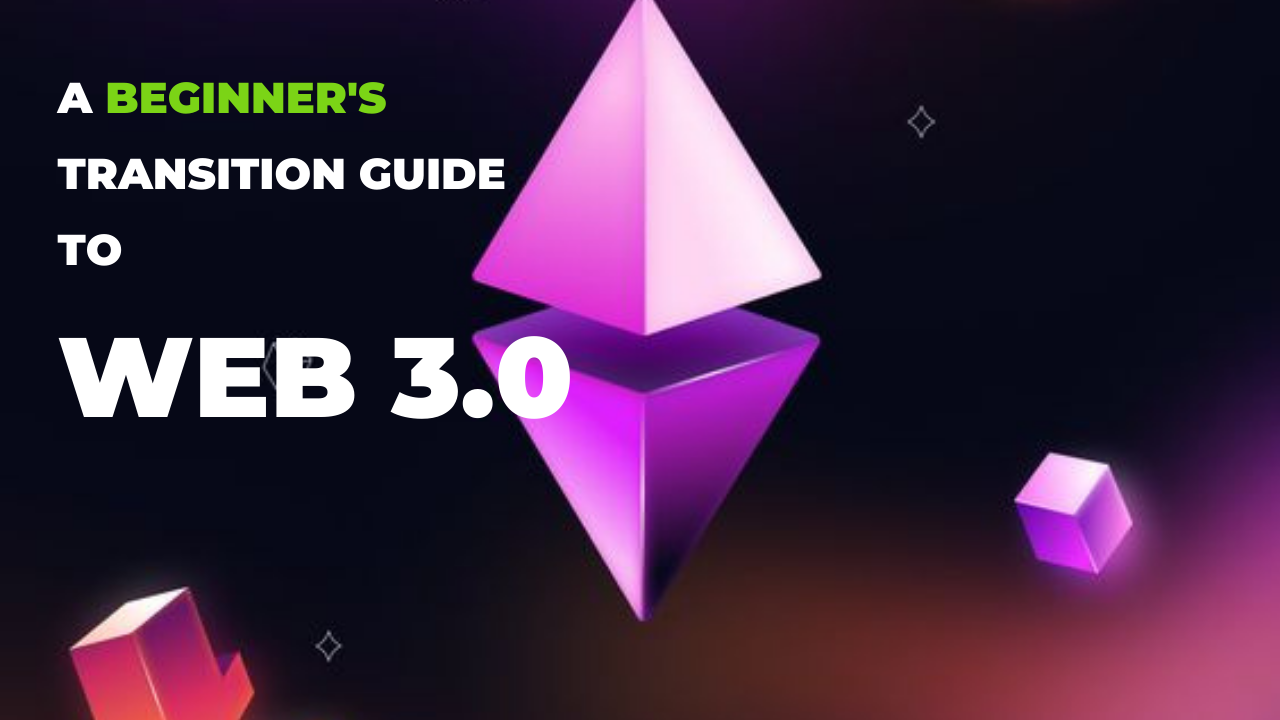From Web2 to Web3: A Beginner's Transition Guide
 Vincent Nam
Vincent Nam
Introduction
One morning, I was scrolling through my Twitter (also known as X) timeline and came across a buzz about Web3.0. It was a revelation—not just for me, but for many others. So I thought, if there was a Web3.0, there must have been a Web2.0 and even a Web1.0. This discovery sparked my curiosity and inspired me to delve deeper into the evolution of the web and the new opportunities Web3.0 presents.
You might be wondering, what exactly is Web3.0? In this guide, "From Web2 to Web3: A Beginner's Transition Guide," we will explore what Web3 is all about, why it’s generating so much excitement, and how you, as a developer or tech enthusiast, can smoothly transition into this new frontier.
A Brief evolution of Web2 the web
Web1.0
This was an era of internet long ago where the web had only a static and a one-way communication platform. This era was characterized by basic websites that held only information in a strict, static appearance form. The Users were basic viewers or spectators, and the webpages had little to no interactivity.
Web2.0
Web 2.0 began in 1999 and is characterized by dynamic, interactive websites that allow for user-generated content, social networking, and collaboration. This era includes streaming services, marketplaces, mobile apps, e-commerce, and social media platforms. Users were empowered to interact with the web by creating, sharing, and updating content. While it’s true that many Web 2.0 services rely on personal data, it's not the only characteristic; many services in this era offer free use in exchange for personal data, which drives targeted advertising and personalization. This era is dominated by companies that offer services in exchange for personal data and has transformed the way we communicate and collaborate online. While we are still enjoying Web 2.0, and while it hasn't exhausted its capacity and features, we are witnessing a new era known as Web 3.0
web3.0
Web3.0 is the third generation of web technology, focusing on decentralized applications (DAPPS). The primary focus of Web3 is decentralization through blockchain technology. By decentralization, we mean shifting control from major groups to smaller groups (such as you and me) in order to have a say in how things are done. Web3.0 extensively uses blockchain technology, adopting token-based economics, and emphasizes machine learning and artificial intelligence. This technology brings more security and is not reliant on major players. Web3.0 aims to dismantle the centralized control of the web, bringing changes to every aspect of society, from banking to government, education, and gaming.
Differences Between Web2.0 and Web3.0
Assuming its in a tabular form, here are the differences between web 2 and web 3.
web2 was and is being controlled by large centralized companies (something which President Donald Trump referred to as The Big Tech). meanwhile, web3.0 promises to be controlled and governed by the communities or participants of the web.
Web2 offered Limited user control over personal data.. While there is a full control and ownership of your data in web3.0. By data, we mean personal details, and footprints about you on the web.
In Web2, there is a reliance on a third-party for transactions and interactions while in web3.0, there is a direct peer-to-peer interactions without any third-parties.
Innovation is driven by few major owners and controller of the web while in Web3.0, there is an open ecosystem that encourages innovation.
There is censorship and control of content in web2.0 while in web3.0, being a strong critic of censorship, they are resistant to censorship due to decentralization.
In a nutshell, the biggest difference between Web2 and Web3 is the shift from a centralized internet to a decentralized one. Web2 relies on intermediaries and controlled systems, while Web3 enables peer-to-peer interactions without intermediaries, offering more control and ownership to users.
Transitioning into WEB 3.0
During a period on Twitter NG, where there was a lot of buzz about Web3, young developers and aspiring ones were advised and encouraged to transition into Web3 as it provided new career opportunities and earning potential. It appeared that the pool of web development and UI/UX (Web2) was becoming almost saturated. Aspiring techies and seniors alike wondered how to make a turn and transition into the tech niche with fewer competitors and more opportunities. This guide is especially for people already in the tech space who want to transition into Web3. Here are steps to get started:
Find a reason transition
Learn the fundamentals
Join Community
Resources to learn with
continue to Build Projects
Finding a reason: as a As a techie wanting to begin in web3, there should be a clear reason why you decide to dive into it. Your motivation shouldn't be solely based on the trend around you; otherwise, you might better remain in your current niche and develop yourself further to become more proficient. The reason behind your decision will lead to motivation and commitment while learning web3. Other reasons should include a belief in the principles of decentralization, the potential for more equitable systems and the need to gain skills that would be in high demand in the future as web3 technologies become more widespread.
Learning the fundamentals: If you are a developer familiar with HTML, CSS, and JavaScript, you have a good foundation to start with. Web3 isn’t entirely new or a replacement for Web2; it’s an addition, much like how TypeScript adds features to JavaScript. In this case, Web3 introduces truly amazing, world-changing features. Also note that transitioning to Web3 also requires learning specific blockchain technologies and smart contract languages like Solidity, Ethereum etc. There are numerous excellent resources available to learn Web Development fundamentals first before going into web3. One highly recommended course for learning Web Development from scratch is the Colt Steel web Developer Bootcamp.
Joining a community: Joining a community is crucial when transitioning into web3. Engaging with other developers, attending virtual meetups(web3 x space), and participating in online forums can provide support, resources, and networking opportunities. Communities like Discord, X (Twitter), and specialized web3 forums are great places to start. you being registered on these social media accounts and visiting it would enable you join web3 related virtual meetups. Being part of a community helps you stay updated on the latest trends, find collaborators, and get feedback on your projects. It’s a valuable way to learn from others and accelerate your growth in the web3 space.
Resources to learn with: There are plenty of resources available to help you learn about Web3 and get started. One excellent example is LearnWeb3DAO, which offers a comprehensive learning path for developers at all levels. Other resources include online courses, tutorials, and documentation from platforms like Ethereum, Solidity, and various blockchain communities. Make use of these tools to deepen your understanding and skills in Web3 development. Other specialized resource platform include:
Alchemy
Whiteboard Crypto
Build Projects: As developers, the best way to learn better is to actually build projects. while taking one of these courses, you will be equipped to also build something on your own. If you go through Youtube you will find many tutorials where you will build NFT Marketplaces, a simple Token, NFT Collection, DAOs, etc. don't get stuck in tutorial hell. Be inspired and build things on your own.
While at these, you can begin to apply for web3 jobs on the usual customary tech job posting platforms that you are already aware of.
Summary
Transitioning from Web2 to Web3 represents an exciting journey into a decentralized and innovative future. By understanding the evolution of the web, recognizing the differences between Web2 and Web3, and following practical steps to acquire new skills, you can position yourself at the forefront of this technological shift. Embrace the opportunities Web3 offers, join the vibrant community, and start building projects that will shape the future of the internet.
Subscribe to my newsletter
Read articles from Vincent Nam directly inside your inbox. Subscribe to the newsletter, and don't miss out.
Written by

Vincent Nam
Vincent Nam
A detail-oriented front-end developer with a flair for attempting to transform ideas into impactful digital solutions. comfortable working with a variety of technologies including HTML, CSS, and JavaScript. Certified and skilled in Motion Graphics and animation, thus repeatedly received commendations for exceptional diligence and innovation in task execution.